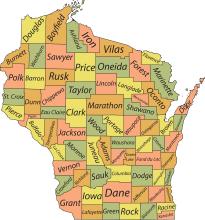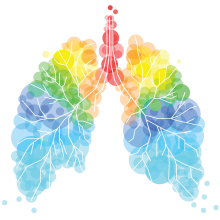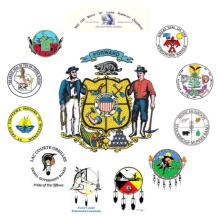Commercial Tobacco Prevention and Treatment Program: Local Efforts
Reducing the impact of commercial tobacco at the community level
The Commercial Tobacco Prevention and Treatment Program in Wisconsin collaborates with local alliances and coalitions, statewide partners, and tribal governments to understand and address the specific needs of our state’s different communities.
Local alliances
Local alliances and coalitions connect people and organizations with shared purpose and goals. Members learn and understand specific communities’ histories regarding tobacco and nicotine, share quit resources, connect with state leaders to change policies, and engage youth in prevention programs.
Statewide partners
Statewide partners work across the entire state to impact these same important initiatives, participate in tobacco research, engage with health care providers, and provide quit resources. They also provide a link to state and national efforts around lung, cancer, heart, asthma, and smoke-free housing issues.
Tribal governments
Tribal governments in Wisconsin engage in a government-to-government relationship with us to understand the effect of multigenerational marketing amongst Native Americans in our state. We collaborate to provide culturally tailored programs and services to address tobacco and nicotine use among indigenous peoples.
Wisconsin Wins
Wisconsin Wins is a proven education, outreach, and inspection program for tobacco and vape retailers across the state. It was established in 2002 in response to an underage sales rate over 30%, which put the state at risk of losing millions of dollars in federal substance use prevention funding. Team members provide retailers with training, signage, and other tools to help them comply with the federal tobacco 21 sales law. Local agencies also partner with law enforcement to conduct nearly 4,000 tobacco and vape retailer inspections per year.
Find your local tobacco alliance
Jackson, La Crosse, Monroe
Dane
Fond du Lac, Green Lake, Marquette, Waushara
Eau Claire
Kenosha, Racine, Walworth
Marathon, Portage, Wood
Door, Kewaunee, Manitowoc, Sheboygan
Ashland, Bayfield, Douglas, Iron, Sawyer, Washburn
Florence, Forest, Langlade, Lincoln, Marinette, Oneida, Price, Vilas
Brown, Calumet, Outagamie, Winnebago
Adams, Juneau, Sauk
Barron, Burnett, Pepin, Pierce, Polk, Rusk, St. Croix
Milwaukee
Milwaukee
Milwaukee
Milwaukee
Bad River, Forest County Potawatomi, Ho-Chunk, Lac Courte Oreilles, Lac du Flambeau, Menominee, Oneida Nation, Red Cliff, Sokaogon, St. Croix, Stockbridge-Munsee
No alliance in your community?
Contact Wendy Vander Zanden, Tobacco Prevention Specialist, at Wendy.Vanderzanden@dhs.wisconsin.gov to get involved.
Get free help to quit commercial tobacco and nicotine
Wisconsin Tobacco Quit Line
Customized plans and coaching
Ages 13+
800-Quit-Now
Text "READY" to 34191
WI Tobacco Quit Line website
Live Vape Free
Text support to quit e-cigarettes
Ages 13-26
Text "VAPEFREE" to 873373
Live Vape Free website
American Indian Quit Line
Culturally tailored coaching
Ages 18+
888-7Ai-Quit
American Indian Quit Line website
First Breath
Support during and after pregnancy
Ages 18+
First Breath website
The word "tobacco" on this page refers to commercial tobacco, not traditional Native American tobacco
Traditional tobacco: a sacred medicine for healing; offerings to the Creator; and spiritual gifts to express gratitude, show respect, and ask for prayers or advice. Commercial tobacco ("tobacco"): changes the meaning of traditional tobacco into dangerous recreational commodities like cigarettes, vapes, and chewing tobacco.




